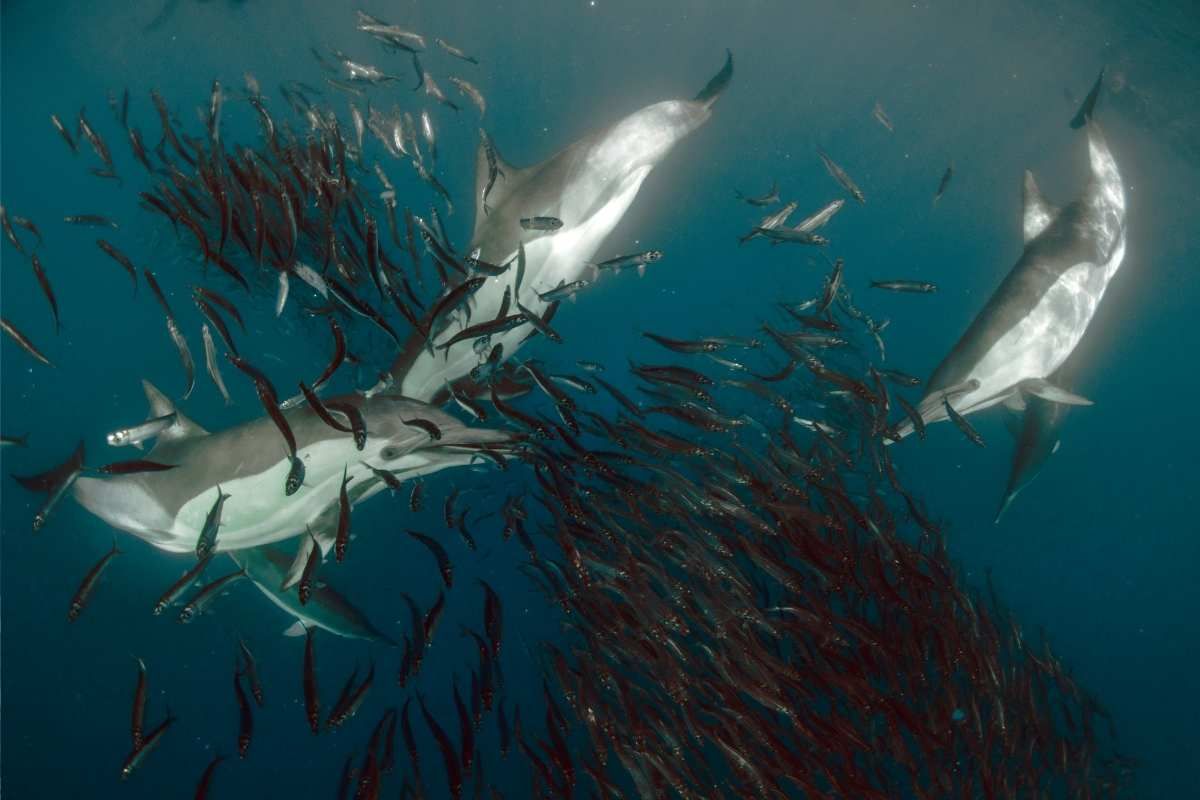Every year, the eastern coastline of South Africa transforms into one of the most explosive feeding frenzies on Earth. Billions of sardines – driven by cold water currents and ancient instinct – form massive shoals stretching for miles.
To the casual observer, it’s a shimmering silver ribbon in the sea. To predators, it’s a buffet with no end in sight. Welcome to the sardine run: a high-stakes spectacle where blood hits the water and nature’s most efficient killers gather for a feast.
The migration that triggers mayhem
The sardine run typically kicks off between May and July, when ocean temperatures drop along the coast. Pilchard sardines, scientifically known as Sardinops sagax, migrate northward from the southern tip of Africa in staggering numbers, following the nutrient-rich cold water of the Agulhas Bank.
It’s not just a migration, though, – it’s a trigger. The moment those sardines move, a chain reaction starts. Dolphins, sharks, whales, seabirds, and even humans gear up to intercept the moving mass.
Predators converge
What makes the sardine run unique is the sheer density and diversity of predators. Common dolphins work in coordinated teams to herd sardines into tight balls – called bait balls – that make for easier pickings. Once the bait balls are formed, all hell breaks loose!
Sharks – usually bronze whalers, blacktips, and duskies – charge through the chaos with mouths wide open. Bryde’s whales also lunge from below, swallowing tons of sardines in a single gulp.
Cape gannets are known to divebomb from the sky at 97kph, folding their wings mid-air to pierce the ocean like living missiles.
Even seals and game fish like tuna and king mackerel join the frenzy. The ocean turns into a swirling storm of fins, beaks, teeth, and blood.
Why the sardines don’t stand a chance
Despite their numbers, sardines have little to no defense once the predators close in. Their main strategy is to stick together and rely on safety in numbers. But in the face of such a coordinated and varied assault, it often just delays the inevitable.
Nature doesn’t play fair, and the sardine run is proof. The predators aren’t just hunting; they’re optimising. Dolphins push, sharks scatter, birds pick off stragglers, and whales clean up what’s left. It’s a study in efficiency – an oceanic assembly line of death.
When it happens, the sardine run is unmatched – a primal display of life and death, speed and precision. It’s not just a feeding event; it’s a revelation. In those chaotic, bloody waters off South Africa, you see nature without filters: brutal, brilliant, and real.
Have you spotted sardines before?
Let us know by leaving a comment below, or send a WhatsApp to 060 011 021 1.
Subscribe to The South African website’s newsletters and follow us on WhatsApp, Facebook, X and Bluesky for the latest news.
